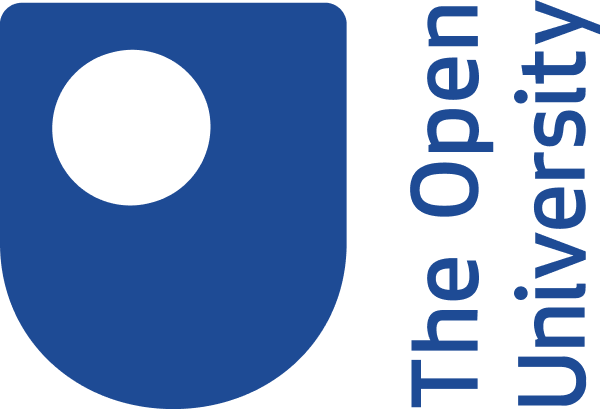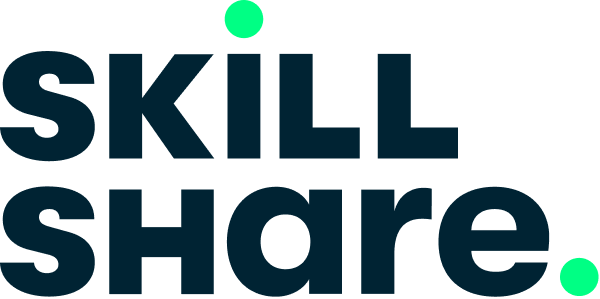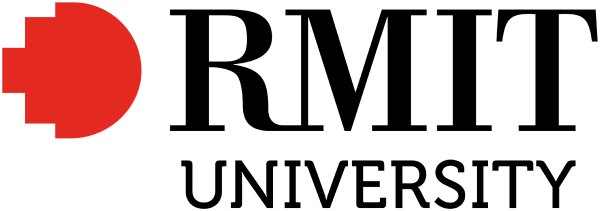Kurse zur Verbesserung der Online-Vermarktung-Fähigkeiten
43 Kurse
Creative Director at Hello Monday Jeppe Aaen | The Power of Saying No
In this video, Creative Director Jeppe Aaen discusses the value of saying no in the creative process. He shares his personal journey towards embracing this concept, including the challenges he faced and the benefits it brought to his work. Jeppe highlights how saying no can lead to more authentic and meaningful projects, as well as increased confidence in one's creative decisions. He also provides practical advice for creatives looking to implement this approach in their own work, such as setting boundaries, being assertive, and trusting one's instincts. Throughout the video, Jeppe's passion and expertise shine through, offering a valuable insight into the world of creative direction.

Earn Passive Income by Working from Home
A Step by Step Guide: How to Generate Passive Income without Company, Experience or Website, Based on Long -Term Growth What you'll learn: How to generate passive income and work from anywhere in the worldHow to start a business without your own product or serviceHow to create a second source of incomeHow to make a passive income online without company, experience or websiteYou will learn how others can help you to grow your businessYou build an online business by working from homeHow to sell national / international products without a company and accept payment by cardHow to use Etsy from zeroHow to use AI to create digital products Over time I have been looking for different methods to generate a monthly passive income without requiring experience, without needing a company (LLC, etc), and without requiring a website to be created. Well, after a long search, I found the solution and I want to share it with you through this course.This method does not require initial money and is 100% free. This is not a mistake. If you implement the strategies I have presented in this course, you can build a passive income stream that will not cost you a penny to start, but it will pay you satisfactory amounts in the coming months and years!If you dreamed of getting rid of the 9-5 job or just want to learn how to start a business, you can operate on your computer from anywhere in the world, this course can change your perspective.Stop thinking and enroll today. Start generating passive income tomorrow.This course is the best way to start making passive income online.Don't go on wondering "What would have happened if I had done it". You won't be disappointed, plus you get an unconditional 30-day money-back guarantee. What have you got to lose?You will get: Lifetime Access to The Course Quick & Helpful Support in the Q&A Section 30 Days Money Back Guarantee!Stop thinking and enroll today. Start generating passive income tomorrow.

The Digital Economy
Whether you work in a micro business, a small or medium-sized enterprise (SME) or a large firm, it’s vital to get to grips with new technologies and understand the impact they could have on your operations, sales and long-term success. With The Digital Economy program from The Open University Business School, you can do just that. You’ll discover how four key business areas are changing in today’s digital economy. Accessible on desktop, tablet or mobile and delivered in bite-sized chunks, the four online courses in this program provide a flexible way to enhance your business, management and marketing skills, and demonstrate your continuing professional development (CPD). Find further information about OU registration, the assessment module in this program and your eligibility, as well as our MBA, in the entry requirements. Academic credit If you are aiming to use your study of courses in the Digital Economy program to obtain academic credit, please be aware that the final planned presentation of the Open University Assessment Course BXM871 Managing in the Digital Economy starts July 2020. Please ensure that you allow yourself enough time to obtain all four Certificates of Achievement from courses in the program before registering for the Assessment Course. The start dates of the relevant FutureLearn courses in 2019 and 2020 are available here.

How FINN.no went from being search engine hostile to be a little bit friendly - Henning Spjelkavik
The speaker begins by discussing the importance of SEO for Findotal, a website with over 95% of its pages indexed by Google that were a waste of time and energy. The video explores how Findotal went from being search engine hostile to friendly, covering topics such as statistical research, user engagement, and page optimization. The speaker emphasizes the importance of being friendly towards search engines, highlighting that it's not just about optimization but also about being visible and accessible to users. The video concludes by providing tips on how to avoid the same problems as Findotal and improve a website's SEO. Key points covered in the video include the importance of knowing your audience, optimizing page load times, and using descriptive and unique page titles.

DROPSHIPPING INTRODUCTION - How to start dropshipping- Video 1 Updated
In this video, Oscar provides an introduction to e-commerce and dropshipping. He explains what dropshipping is and how it works, and covers the basics of building an e-commerce platform using a website builder. He also shares his experience in creating a full tutorial on using the builder or platform for e-commerce. The video covers topics such as the importance of having the right tools for e-commerce, how to use Google platforms for e-commerce, and how to get started with dropshipping. Oscar provides detailed information on how to create a website and add products to it, as well as how to handle payments and shipping. He also discusses the importance of having a business online and how he has used the builder or platform to create an e-commerce site for his students. The video is informative and helpful for those looking to start an e-commerce business or expand their existing one using dropshipping.

How to Upgrade Magento 2.x
The video starts by discussing the importance of planning and preparation before starting the upgrade process. It then covers the different steps involved in upgrading Magento 2.x, including configuring the new environment, updating the database, and installing the new version of Magento. The video also provides tips on how to minimize downtime and ensure a smooth transition. Additionally, it discusses the benefits of upgrading Magento 2.x, such as improved performance, enhanced security, and access to the latest features. Throughout the video, the author shares their experience and insights gained from working with Magento upgrades, offering valuable advice and best practices for those looking to upgrade their Magento 2.x installation.

Speak on Camera: 7 Strategies to Build Confidence & Engage Your Audience
Speaking on camera can be stressful and intimidating. If you want to reach your audience, inspire your followers, or grow your online business through video marketing but feel stuck because of your fear of the camera, you are not alone. This course will guide you through strategies and tools that will help you overcome your fear and feel confident about getting on camera and connecting with your viewers. In this course, you will learn: How to manage your fear of speaking on camera. How to sound more natural on camera. How to connect with your audience. Who is this course for? Content Creators who want to build a personal connection with their followers. Business owners who want to connect with their customers and boost their sales. Teachers who want to create online courses and join the growing online education field. Anyone looking to grow their on-camera speaking skills.

Google Ads Tutorial 2023 - Beginners Guide to Using Google Ads (AdWords)
In this beginner-friendly Google Ads tutorial, we'll guide you through the process of creating a new account from scratch. We'll start by logging in with an existing Google account and then move on to setting your main advertising goal. Next, we'll show you how to switch to expert mode and choose your objective. After that, we'll walk you through setting up your billing information, including your country, time zone, and currency. Finally, we'll demonstrate how to explore your account once it's set up and ready to use.

What Is Amazon FBA? And How Does It Work?
In this video, we will explore what Amazon FBA is and how it works. We will discuss how to get started as a complete beginner and make money through this platform. The video will cover the benefits of selling on Amazon, how to find profitable products, and the different types of sellers on the platform. Additionally, we will touch on the topic of passive income and why it's an attractive option for many entrepreneurs. By the end of the video, viewers will have a comprehensive understanding of Amazon FBA and how to leverage it for their own online business.

Messenger As a Platform: Strategic Outlook - Julien Decot @ WeAreDevelopers Conference 2017
Julien Decot, from Facebook, talks about the messenger platform and its strategic outlook at WeAreDevelopers Conference 2017. He explains how the platform helps developers build the best possible products using all the tools provided by Facebook, including messenger, VR, and more. He also discusses their developer programs in Europe and Africa, including opening a developer school in Berlin for refugees. The talk covers the team's efforts to help developers get going on the platform, as well as their broader mission to address the developer ecosystem in the region.

$100k w/ Affiliate Marketing ✔️100% Free Step-by-Step Beginners Guide
The video begins by highlighting the importance of perseverance and resourcefulness in affiliate marketing. The speaker emphasizes that success doesn't come easily and that there is no substitute for hard work and dedication. They also mention that there is no pre-made solution or pre-done thing that can save you, and that you will have to figure things out on your own. The video then touches upon the topic of confusion and how to overcome it by being resourceful. The speaker provides examples of their own videos that will fill in gaps and help viewers understand how to do things. They also emphasize that all other internet marketers are working more aggressively than you, but that doesn't mean you can't catch up. The video concludes by highlighting the perfect time to start this business and the model being taught as essentially the best one. Overall, the video focuses on the importance of persistence and resourcefulness in affiliate marketing.

YouTube Marketing | YouTube Marketing Strategy | Great Learning
YouTube is a powerful marketing platform with over 22.8 billion visits per month. In this video, we'll cover the essentials of YouTube marketing, including mastering storytelling and marketing tactics. Learn how to create effective content, optimize your videos for visibility, and utilize valuable tools to bring prospects to your brand. Whether you're a beginner or an experienced marketer, this video will provide you with actionable insights to help you achieve your marketing goals on YouTube.

How To Make Money With JVZoo - JVZoo Affiliate Marketing Tutorial
In this video, Aaron Chen explains the basics of affiliate marketing with JVZoo. He covers how to find products to promote, how to enroll in the JVZoo Academy for free training, and strategies for success. Aaron also warns against common mistakes people make when promoting products directly and emphasizes the importance of understanding JVZoo's platform. The video provides valuable insights into the world of affiliate marketing and how to leverage JVZoo's tools and resources to maximize profits.

eBay Selling Masterclass: eBay Selling with a eBay Business
Learn eBay Selling from a eBay Powerseller and Find Your Favorite eBay Business Model with This eBay Course What you'll learn: Understand the Main Concepts of eBay SellingLearn New and Tested Tactics to Making ProfitsKnowledge to Earn Money Online from Your New Skill SetCreate Your Own eBay BusinessGain 10+ Years of Knowledge to Maintain Long Term SuccessPick Your Favorite eBay Business ModelSee Step by Step How to Create an eBay ListingBecome Clear on What It Takes to Become a PowersellerBecome Clear on What It Takes to Become a Top Rated SellerAwareness of What Fees Are Involved in Selling on eBay Are you looking to make money online in 2018? If you want to make this the year where you increase your income, then this is the course for you.Over the last 10 years I've been selling on eBay andI've come tolearnwhat doesand what doesn't work. In fact, during this time I'vebecome bothaPowerseller and Top Rated seller.While doing eBay part time, I've been able to help multiple6 figure business's with theireBay stores, and create my own eBay accountpart time earning 5 figures! Please feel free tosee my preview lesson for proof of my income. I truly believe that you can do it too!Are you aware that there are billions of dollars spent on eBay every single year?Plus, there are over 100 million active eBay buyers looking for items to buy! This means that there's still more than enough space for new sellers to come into eBay.To be crystal clear, in order for my lessons to work, you need to work.This is NOT is get rich quick course. The amount of money you earned is based around your efforts and knowledge.I personally can't control your efforts, but I do want to give you my 10+ years of knowledge of selling on eBay so you too can be successful.This course goes through just about everything that you'd need to know when starting your owneBay business. My goal is to be 100% transparent, that way you can succeed.If your ready to learn what it takes to make money when selling on eBay, thenI invite you to enroll now!**Please Note** This course is not partnered or affiliated with eBay Inc.============================INSTRUCTOR BACKGROUNDI've been an entrepreneur for 10+ years, and have taught over 25,000 students how to improve their own skills. I've become a eBay Powerseller and Amazon Best Selling Author and active consult with multiple 6, 7, and 8 figure businesses. From what I've learned from these experiences, I'd love to share the knowledge with you.My goal is to help as many people possible by teaching each student everything Iknow about each topic. I teach to ensure each student leaves each of my courses feeling like they've learned something new.============================BONUSESINCLUDED* Free extra downloadable worksheets to make the course even more valuable!* Free priority customer support. Have a question, get an answer back within at most 24 hours!* Free eBook on Ways on how to start saving and increasing income (no email needed)!*Free entry to get automatically entered to get chosen for my student of the month (get featured in a shout out email)!============================GETONE-ON-ONE HELP You can get my help and advice at any time - simply email me through Udemy! Regardless if your just starting your course or have been done for months, I'm happy to help you. Students are able to start discussions and message me with private questions. I aim to answer 99% of questions within 24 hours. I really enjoy helping students who've taken my courses and I look forward to helping you!============================AMAZINGVALUE:LEARNFROM10+YEARSOFEXPERIENCEALLINJUSTACOUPLEHOURS!The information that you'll learn in this course can be either learned from many years of experience, or you can learn valuable skills all best summarized within a couple hours of time. Is it really worth taking hundreds or even thousands of hours of your time to learn this information by yourself? The choice is yours to make.============================PROVEN STRATEGIESTOGROWYOURBUSINESSAll strategies that I share are either from my personal experience or are well proven strategies based off industry experts.============================WHYTAKETHISCOURSE?Simply put, save time, save money and learn valuable skills that you can implement into your life (for the rest of your life). Learn from others that have done it before you, and learn what have proven to work best for them. Don't do it all by yourself!============================CERTIFICATEOFCOMPLETIONWHENYOUFINISHTHECOURSE When you complete 100% of the videos in this course, you'll be emailed a certificate of completion by Udemy!============================MONEY BACK GUARANTEEThe course comes with a Udemy-backed, 30-day money-back guarantee so you can try this course absolutely risk free. This is not just a guarantee, it's my personal promise to you that you will improve your skills after completing this course.Invest in your future. Enroll now.

The big business of small things
The video begins by exploring how something as simple as a gift has evolved into a major advertising tool with tens of millions of active users. The founder and CEO of Giffy, Alex Chung, takes the stage to discuss the rise of visual communications and the company's expansion plans. Chung explains that Giffy is not just about cat gifts, but rather a conversation tool for finding reactions, expressions, and everything people would talk about in normal conversation and send along to friends. He also highlights how Google is like the library tool of the internet, while Giffy is more like a conversation tool for finding reactions and expressions. The video concludes by emphasizing the importance of visual communications and Giffy's role in shaping the future of advertising.

Mouth Watering Video: Gorging on Food Porn
The educational video 'Mouth Watering Video: Gorging on Food Porn' examines the global phenomenon of food-related videos on social media. The speaker begins by asking viewers to raise their hands if they have watched or shared a food-related video online, and then delves into why these videos are so popular. They discuss how food-related content has become a staple in many people's social media diets and explore the reasons behind this trend. The video also profiles two individuals who have made a name for themselves in the world of competitive eating, highlighting their achievements and the cultural significance of these videos. Throughout the video, the speaker provides interesting facts and anecdotes that shed light on the psychological and cultural factors that contribute to the popularity of food-related content online.

What Is Dropshipping? How To Start Dropshipping on Shopify
In this video, we'll cover everything you need to know to start building your first dropshipping business on Shopify. You'll learn about the benefits of dropshipping, including low startup costs and the ability to work from anywhere. We'll also define what dropshipping is and how it works, and provide tips on how to find reliable suppliers and set up your store for success. By the end of this video, you'll have a solid understanding of how to get started with dropshipping and how to build a successful business. Whether you're a new or seasoned entrepreneur, this video is perfect for anyone looking to learn more about dropshipping and how it can help them achieve their business goals.

Make Money From Home: 12 EASY Options to Make Money Now
Do YOU Want to Make Money From Home? I've Helped Over 495,000 People And I'd Love to Help YOU too! What you'll learn: See 10 Easy Websites to Make Money From HomeLearn 7 "Ninja Tricks" to Increase Your EarningsLearn Click-By-Click How to Make Money from HomeSee the Proof That All of These Sites Work If YOU have been looking for easy options to make money from home, this course is the right one for you.I'll show you CLICK-BY-CLICK12 easy ways to make money online.This will also give YOU confidence that anyone can earn money from home.Everything in this course is extremely simple and easy-to-follow.If you are looking for more advanced strategies to make money online, Iadvise that you take my other Udemy courses where I'll show you more profitable strategies.These methods are EASYWays to make money but in my other courses, you'll learn how to earn BIGmoney online.I help people WORLDWIDE to make money and every single day over 10,000 people watch my videos on YouTube. My greatest people is to see people succeeding when they use my methods to make money.Every single person is important.Once you learn these EASY ways to make money, you can move to more profitable ways to earn money online that I will show you.You're gonna be the next success story!I'll see YOU inside my money-making courses!It's Your Time!- Roope "Educating over 385,000 people on Udemy on how to make money online"KiuttuPS. If you have been dreaming of making money from home, now is the high time to START!Every second that you delay may be costing you money.Take action before it's too late...

Persuasion Dripping Copywriting Sales Bullets: How To Sell In 15 Words Or LESS!
In this video, John Benson discusses the techniques of ethical persuasion for effective copywriting. He highlights the importance of understanding the psychology behind why people buy and how to use 'dripping sales bullets' to create strong, powerful messages that sell almost anything in 15 words or less. John also covers the basics of copywriting, including writing for beginners, intermediates, and pros, as well as creating strong calls-to-action. He emphasizes the importance of using ethical persuasion methods to build trust with your audience and increase conversions. Throughout the video, John provides examples and exercises to help viewers apply these techniques to their own copywriting efforts.

Startup Content: Writing You Need When Starting A Small Business
Startup Content: Writing You Need When Starting A Small Business is a fast-paced, action-oriented course geared to quickly turn your startup into a brand worth following. As a student in this course, you’ll learn: 5 types of content you need 3 things you need to know before writing anything The 'Value Rule' How I approach content when working with small businesses and in my own marketing efforts How to create 3 quick blog topics for your first three blog posts Tips and tricks when writing each type of content for your business And more!

How To Get More Followers On TikTok - Get 100K TikTok Followers In 24h!
In this video, you will learn a straightforward method for gaining massive follower growth on TikTok. The expert from qsocial.net will share their secrets on how to create content that goes viral and reaches the top of the platform within 24 hours. You will discover the importance of following steps and implementing them into your strategy for guaranteed results. Don't waste any more time, watch the video now and start growing your follower count immediately!

Creating a Multi-Vendor E-commerce Website
In this video, you'll learn how to create a multi-wender e-commerce website like Amazon or Etsy. You'll discover how to launch your website, set up payment and delivery options, and manage orders from multiple sellers. You'll also learn how to get paid through the platform and how to manage your seller dashboard. By the end of this video, you'll have a comprehensive understanding of how to create and run a successful multi-wender e-commerce website.

100 Ways I Made Money Online
Would you try enrolling in this class if you are hoping to earn money working online, increase what you already make as a freelancer, or take your business to the next level? You might enjoy listening to the stories in this class if you would benefit from an honest look into my experience working online for five years. What have I done since I started my business in 2011 that you might like to find out about? I have made over 1.5 million dollars online working full time from home for most of it while being suspended or banned from nearly every website that paid me that money. Taking this class might help you avoid the messy failure stories I created followed by amazing growth and avoid making the same mistakes I did. Unlock courage to go forward in your own business today after seeing the 100 different ways I have been able to make money online. Know that if I can do it, you can do it better!When you want to make your first $1 or $100 working online, I hope this class will be inspiration for you to get concrete examples of strategies you can test yourself starting today to produce income for you online. In 2004 when I tried to learn to work online, I could not find any honest information about what worked and what did not. Use this class to get a comprehensive list of what has worked for me to make at least $1 online in 100 different ways and look deeper into how I combined all of these methods to produce over a million dollars.As you build your career freelancing online, you might enjoy adding new strategies to your business and feeling comforted in your failures by knowing that I have had more failures than successes. Get a real look in this class at how many times I have messed things up online from getting my Google AdWords account suspended to Udemy banning me and so many more stories where I did my best only to end up with nothing to show for it except experience which now gives me the power to do even better today.To take your business to the next level, you might be inspired by the relentless passion I have for helping you achieve your goals today that is translated through this class to you in the stories I tell. You might see a new opportunity based on what I have done that adds a valuable new way for you to grow your business and enjoy it more. Even more likely, you might be motivated to cut out a lot of what you do today that you do not enjoy in an effort to isolate exactly what you love to do and to it best more often. Hearing the laundry list I provide of ways to make money online as an entrepreneur in this class might show you the power of not trying to use every means of making money as a means to an end but to focus on what brings the most value to the customer at the least cost.Thank you very much for reading this and I hope you enjoy the class!Sincerely,Jerry Banfield

Online Business: Planning for Success
## This free online course focuses on the planning phase of starting a small online business and will introduce what you need to do for clarity and action. Understand online business and e-commerce With so many ways to operate online, it is important that you understand what your business is and where it fits in. We’ll take you through the differences between various forms of online business models, to help you decide the best direction. We will help you develop a business plan or business model canvas to focus your thinking on the best opportunities for your online business. You will understand how to use primary and secondary research to identify your most valuable customer. By the end of the course, you will be ready to: refine your idea; identify your positioning; develop your pitch; create a business plan; and prepare for implementation Get expert online business advice This course is one of four in the Online Business Success program from RMIT University. On every course, you will be guided by academics from the College of Business and the Business Enterprise Unit. Plus you’ll hear from successful online entrepreneurs about how they planned their online business. This course is targeted at learners who are considering setting up an online business and wish to understand the planning processes involved in starting an online business, through listening to others who have gone through this process, learning theory and activities.

Startup journey to your first successful business or startup
Learn about evaluating ideas, finding co-founder, business models, financing, marketing, mentoring, startups and more. What you'll learn: Marketing, Marketing Management, Market Strategy and Market ResearchProduct Design and Product DevelopmentOnline and Offline MarketingSales and NegotiationHow to find a Mentor and how to work with othersPitching your idea and raising moneyAngel Investors, Crowdfunding and CrowdinvestingTeam building and Personal Development Are you interested in Start-Ups or want to startyour own venture? If yes, this is a great class for you! Here you’ll learn what you should think about and what it takes to become a successful entrepreneur. We talk about team members your Start-Up should have, how to use powerful cooperations, online as well as offline marketing strategies, reasons why many Start-Ups with great ideas fail, how to convince investors to invest in your company and much, much more. If you are interested in this topic, we have a detailled list of what you are going to learn: Business and Revenue Models: It’s a key aspect tot hink about which business or revenue model you use. Of course it depends on the idea you have but this is a basic topic you have tot hink about. Cooperations: Cooperations a maybe the most powerful tool to push each other and become successful. In this video we talk about different types of cooperations and how you can use them Expert Pool: Experts are the secret stars of every successful team. Most of the time they are in the background but their experience definetly helps you out. Fundamental Steps for your Start-Up: Which steps are the most important ones you should keep in mind when building your start-up? How to act when you have a great idea: Which mindset ist he most effective one when you have a great idea? Mentoring: Mentorship is as much worth as you put energy into it. We talk about how you find and convince a great mentor to help you. Online Marketing: The traditional aspects of marketing are still up to date! We explain and talk about the most important aspects of offline marketing and how you can implement them in your strategy. Offline Marketing: One oft he most famous words of the 21st century. Generating an audience and sales online is very important and will even become more relevant over the next years. Positions in your Company: Which positions should you think of when building up your start-up team? Keep in mind that a group of people can achieve more than a single one. Prototyping: We explain why it is very important to create a prototype. Reasons why Start-Ups Fail: Failure is great to learn and grow. We explain which reasons are the most important ones why start-ups fail. Steps for Launching your Product: There is a long way between planning and launching your product. We talk about alle the steps for a successful launch. Team Members for your Start-Up: In every Start-Up there are different parts of people that should be included. Things an investor likest to see: Sometimes getting some extra money can be the key to success. We explain how you convince an investor to invest in your company. Tipps for your Pitch: The best ideas are easy to explain. Pitching your idea can is a must for every entrepreneur. Espacially when it come to investors how you would like to get money from. Ways to get money for your company: How can you raise money for your company? We go through all the different ways you can think of.

EverWeb Website Builder: Create a Website Visually
A complete course on how to easily build your own website using EverWeb. What you'll learn: Build your own website for your business or hobbyHave a very good understanding of EverWeb and how to use all of its featuresLearn how to create a beautiful website without using a single line of code This course provides you with a complete understanding of how to use EverWeb to build your website. Start by learning the basics of using EverWeb before learning more advanced ways of enhancing your website.Don't waste your money paying someone to create your business's website when you can do it yourself very easily, and inexpensively. Rely on yourself and not someone else to make updates to your site. Connect directly with your online customers. Website building with no experience requiredBegin building a website right awaySave thousands by doing it yourselfStart your own business creating and maintaining websites for local businesses in your area

Online MBA Alternative - The modMBA: For Entrepreneurs
Looking for an online MBA alternative? The modMBA gives you an unaccredited MBA-level of experience, all online! What you'll learn: Business Idea GenerationNaming a BusinessPivoting a BusinessBusiness Models and PlansPitch Decks and Pitching Business IdeasMBA Business SkillsOnline MarketingHow to Invest Your Wealth Looking for an online MBA alternative? The modMBA gives you an unaccredited MBA-level of experience, all online! The modMBA is a modern approach to the traditional MBA. You will learn how to grow and scale your business with proven, real world tools and strategies.***This Udemy course acts as a FREE PREVIEWof the full modMBA workshop. ***This online workshop is for individuals who want to not only excel in business, but in life!While you won't earn a Master of Business Administration degree, you will learn nearly everything taught in an MBA program and much more!The modMBA isn’t your typical online course... think of this workshop more as a vehicle for changing your personal and professional life for the better!We cut through the "fluff and fillers" of typical courses, teaching you the real life lessons you need to be successful in business.Our goal is provide you with INSANE value or your money back guaranteed, no questions asked!---We need to note that the modMBA is an informal, unaccredited workshop. We are not a licensed educational institution, nor are we an accredited post-secondary school offering you a degree. Sorry, you don't get to wear a fun cap and gown! If you need an official course credit and the letters M.B.A. behind your name... this workshop isn’t for you!With that said...Do you NEED an MBA degree?Our answer here at Coursenvy is... MAYBE?!1) If you are a working professional that is offered tuition reimbursement by your employer and have a guaranteed salary increase with letters behind your name... YES, go get your masters degree from an accredited educational institution for $20k-$150k!2) If you don't have the monetary incentive on the table for an accredited MBA, but still want to put yourself in a position to be making more money and to surpass your competition and/or co-workers... then the modMBA is for you!--- JOIN THE 300,000+ LIFELONG LEARNERS & ENTREPRENEURS WE HAVE HELPED MASTER BUSINESS! Three reasons to TAKE THIS COURSE right now! You get lifetime access to lectures.You can ask me questions and see me respond to every single one of them thoughtfully!What you will learn in this course is original, tested, and very detailed! Learn the business strategies I implement for clients daily!The modMBA will MASTER business and entrepreneurship from beginner level to advanced! This course introduces students to the fundamentals of entrepreneurship and is designed to help you understand the process entrepreneurs use to start and build businesses.TAKE A STEP IN THE RIGHT DIRECTION WITH YOUR LIFE AND LEARN HOW ENTREPRENEURSHIP AND MASTERING BUSINESS WILL CHANGE YOUR LIFE FOR THE BETTER! ENROLL NOW!

Small business online marketing
This course is designed to help small business owners succeed in marketing their products or services in their local area. Perfect for attorneys, restaurants, churches, daycares, florists, accountants, schools and any other business that wants a good local online presence. In this course, we will understand the four cornerstones of online marketing....website, google places, facebook page, and youtube channel.

Drops-Services Passive Income: Fiverr and other MicroService
Get Started by selling Services and making passive income online even if you don't have any experience or skills What you'll learn: Drops services passive incomeFiverr passive incomeMicro Services Passive IncomeWhat are the most common drop service websites online?How to sign up on Fiverr?How to add a new service on Fiverr?CaseStudy and our earnings revealedTips and Tricks to create a successful serviceMake passive income from Fiverr even if you don’t have anything to sell with our most profitable 10 strategies revealed (you can replicate)Tips to maximize your earnings from Fiverr Unlock Passive Income: Sell Services Online Without the Skills (Even on Fiverr!)Tired of the 9-5 grind? Dreaming of financial freedom and working on your own terms?This course is your passport to passive income through drop services. Learn how to sell in-demand services online, even if you have no experience or skills.Here's what you'll discover:The power of drop services: Understand this simple yet lucrative business model.Top micro-service platforms: Explore popular platforms like Fiverr to find your perfect fit.Fiverr mastery: Learn the ropes – from signing up to adding your first service.Real-life success: Dive into a case study and see our earnings revealed.Become a pro: Master the art of creating successful services with proven tips and tricks.10 secret strategies: Unlock our most profitable strategies – replicate them and start earning.Maximize your income: Discover insider secrets to boost your earnings on Fiverr.Ready to take control of your future?Enroll now and get started in just 7 days!Plus, enjoy a 30-day money-back guarantee. If you're not satisfied, simply ask for a full refund.Don't miss this opportunity – click the button below to start your journey to financial freedom!P.S. Spots are limited – enroll today!

Online Business Startup
The entrepreneur's guide to launching a fast, lean and profitable online venture What you'll learn: Confidently set up and run a businessFind a competent web design agency or freelancer to take their business onlineStart in the process of marketing their business ONLINE BUSINESS STARTUPisn't just a how-to guide in online marketing or SEO... it contains everything an experienced entrepreneur wished he had known when he started in business. We are flooded with so much information in the digital world that it distracts us from the fundamentals ofstarting up and running a lean business.This book is ultimately an answer to the question "How can we quickly implement proven strategies for my online business, and avoid all the noise?"ONLINE BUSINESS STARTUP will teach you: Everything you need to start an online business without the wasted time, money and effort; How to find a trustworthy, reliable digital agency and guarantee a return on your investment; The 7 best tools for auditing and improving your website; How to plan and implement a successful social media strategy. From the Foreword:“I will be recommending this book to every one of my clients, and I highly recommend it to you. It’s an easy read for the online novice, and will stop you from wasting thousands of pounds and having sleepless nights like I used to.” About Your Course Tutor, Robin Waite Robin Waite is a Bestselling Author, Business Coach and Founder of advertising agency, The Coconut Group. Robinworks as a Business Coach working with a maximum of 20 clients at any one time. Robin says, “There aren’t many business problems I can’t fix.” Using a structured 1-to-1 coaching program Robin has a toolkit covering digital, branding, marketing, sales and lead generation, productivity, product and pricing.The Coconut Group has helped hundreds of business owners and organisations to grow since being founded in 2004.The Coconut Group focuses on delivering Branding Workshops - using their signature 1-Day Branding Workshop which incorporates a 7-step process to create new brand identities, re-brand existing companies or brand new products.




